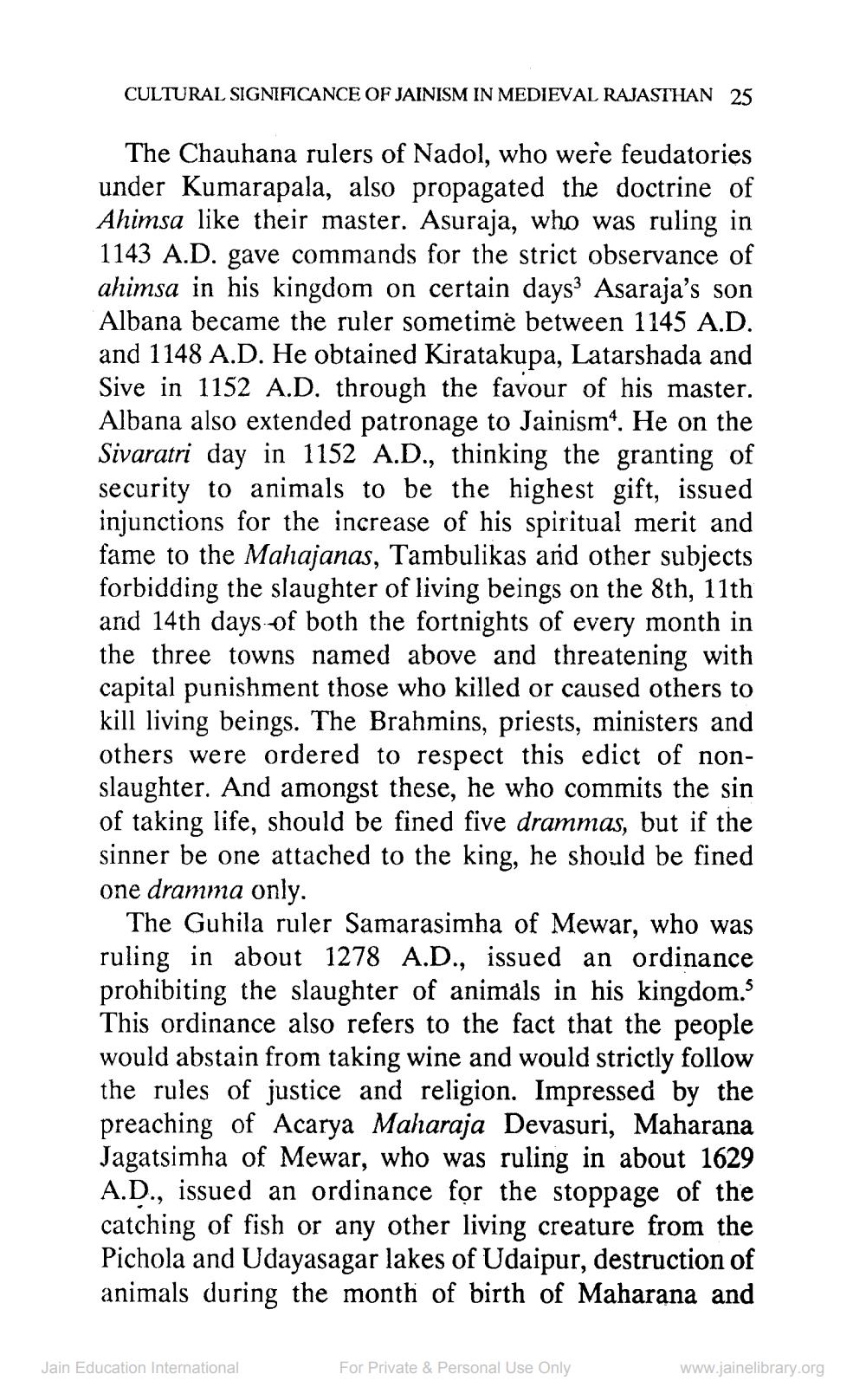________________
CULTURAL SIGNIFICANCE OF JAINISM IN MEDIEVAL RAJASTHAN 25
The Chauhana rulers of Nadol, who were feudatories under Kumarapala, also propagated the doctrine of Ahimsa like their master. Asuraja, who was ruling in 1143 A.D. gave commands for the strict observance of ahimsa in his kingdom on certain days3 Asaraja's son Albana became the ruler sometime between 1145 A.D. and 1148 A.D. He obtained Kiratakupa, Latarshada and Sive in 1152 A.D. through the favour of his master. Albana also extended patronage to Jainism1. He on the Sivaratri day in 1152 A.D., thinking the granting of security to animals to be the highest gift, issued injunctions for the increase of his spiritual merit and fame to the Mahajanas, Tambulikas and other subjects forbidding the slaughter of living beings on the 8th, 11th and 14th days of both the fortnights of every month in the three towns named above and threatening with capital punishment those who killed or caused others to kill living beings. The Brahmins, priests, ministers and others were ordered to respect this edict of nonslaughter. And amongst these, he who commits the sin of taking life, should be fined five drammas, but if the sinner be one attached to the king, he should be fined one dramma only.
The Guhila ruler Samarasimha of Mewar, who was ruling in about 1278 A.D., issued an ordinance prohibiting the slaughter of animals in his kingdom." This ordinance also refers to the fact that the people would abstain from taking wine and would strictly follow the rules of justice and religion. Impressed by the preaching of Acarya Maharaja Devasuri, Maharana Jagatsimha of Mewar, who was ruling in about 1629 A.D., issued an ordinance for the stoppage of the catching of fish or any other living creature from the Pichola and Udayasagar lakes of Udaipur, destruction of animals during the month of birth of Maharana and
Jain Education International
For Private & Personal Use Only
www.jainelibrary.org




